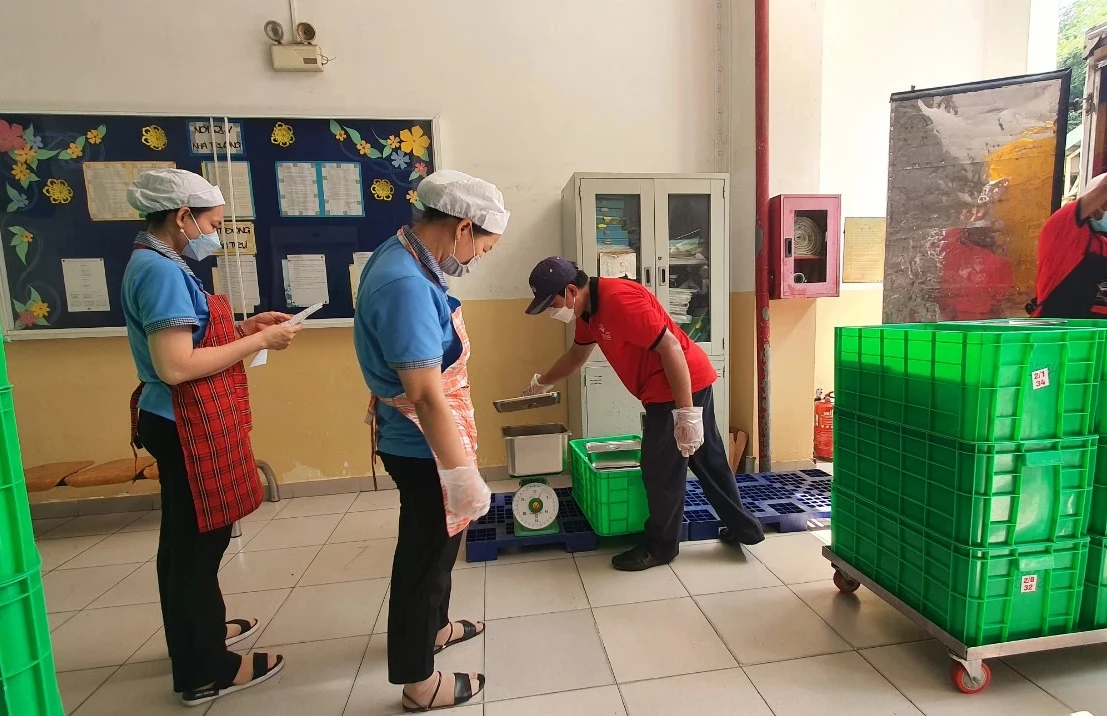
The school's school meal provider must weigh and verify the food to ensure it is adequate.
At Dinh Tien Hoang Primary School, District 1, Ho Chi Minh City, every noon, the nanny of each class will hold a printed sheet of paper with the parameters of the boarding meal of her class that day to weigh and compare with the boarding meal supplier. Only when the quantity is sufficient will the goods be received.
At this primary school, the daily boarding meal fee is 35,000 VND/student (including lunch and afternoon snack), in accordance with the regulations in Resolution 04 of 2023 of the Ho Chi Minh City People's Council. In the context of rising food prices, to ensure that the boarding meal fee is in accordance with the city's regulations and that with that amount of money, students are fed enough, hot and full, the school and the meal provider must weigh and measure very carefully. At the same time, the meal provider also actively supports the school because it is a long-term supplier.
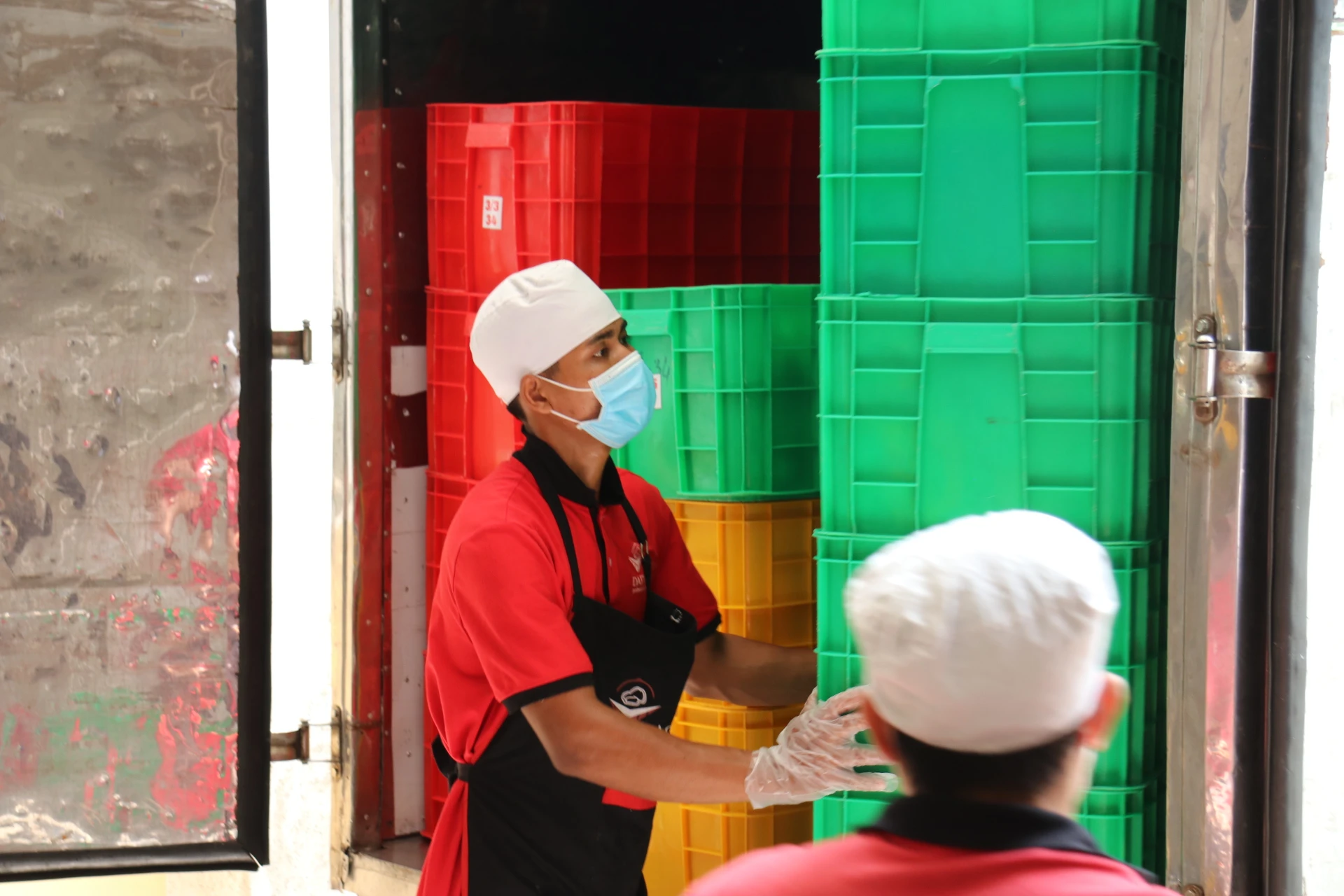
Steamed and dried food items and eating utensils... are all packed in boxes of different colors (green, red, yellow, blue) for convenience in the process of dividing into classes.
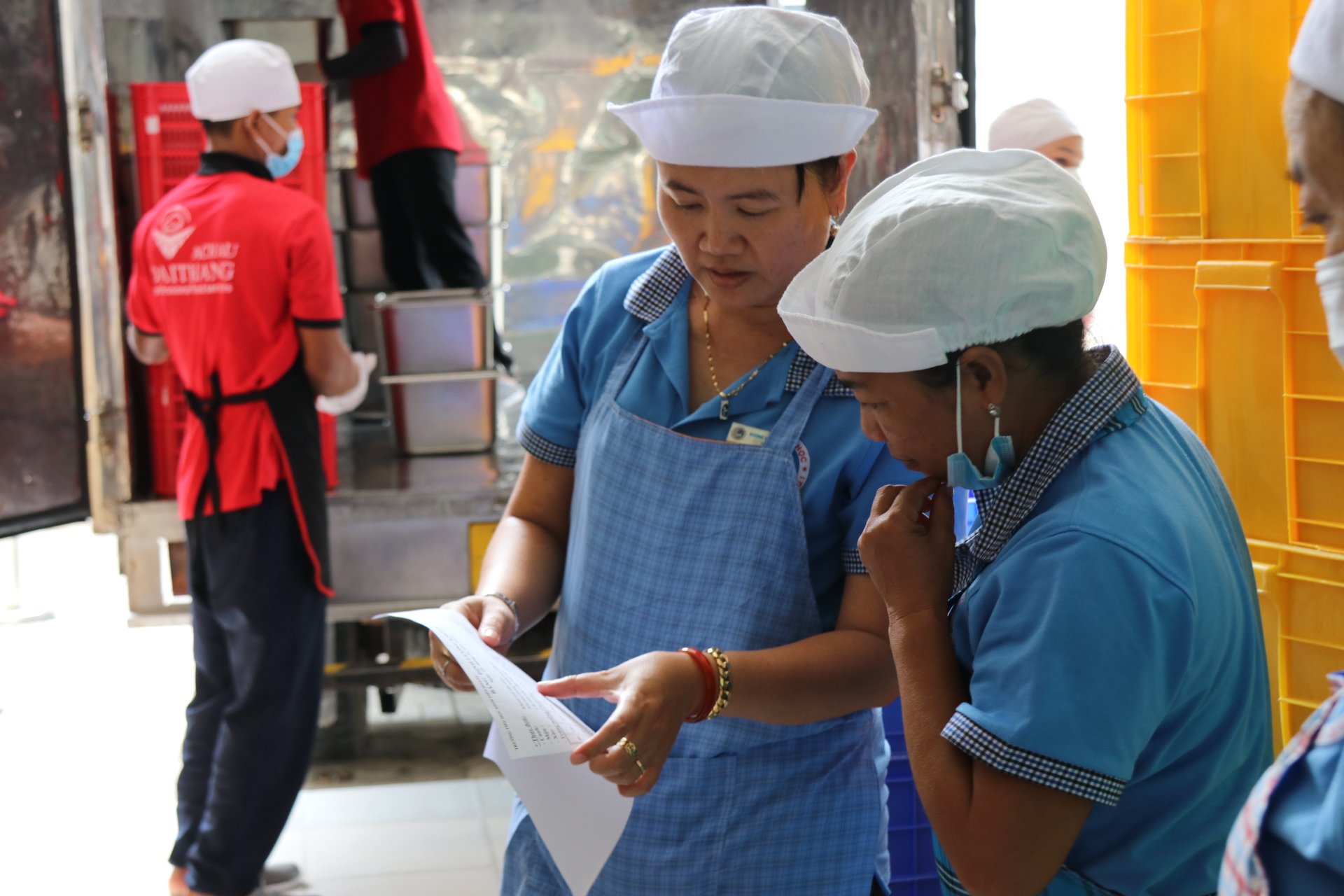
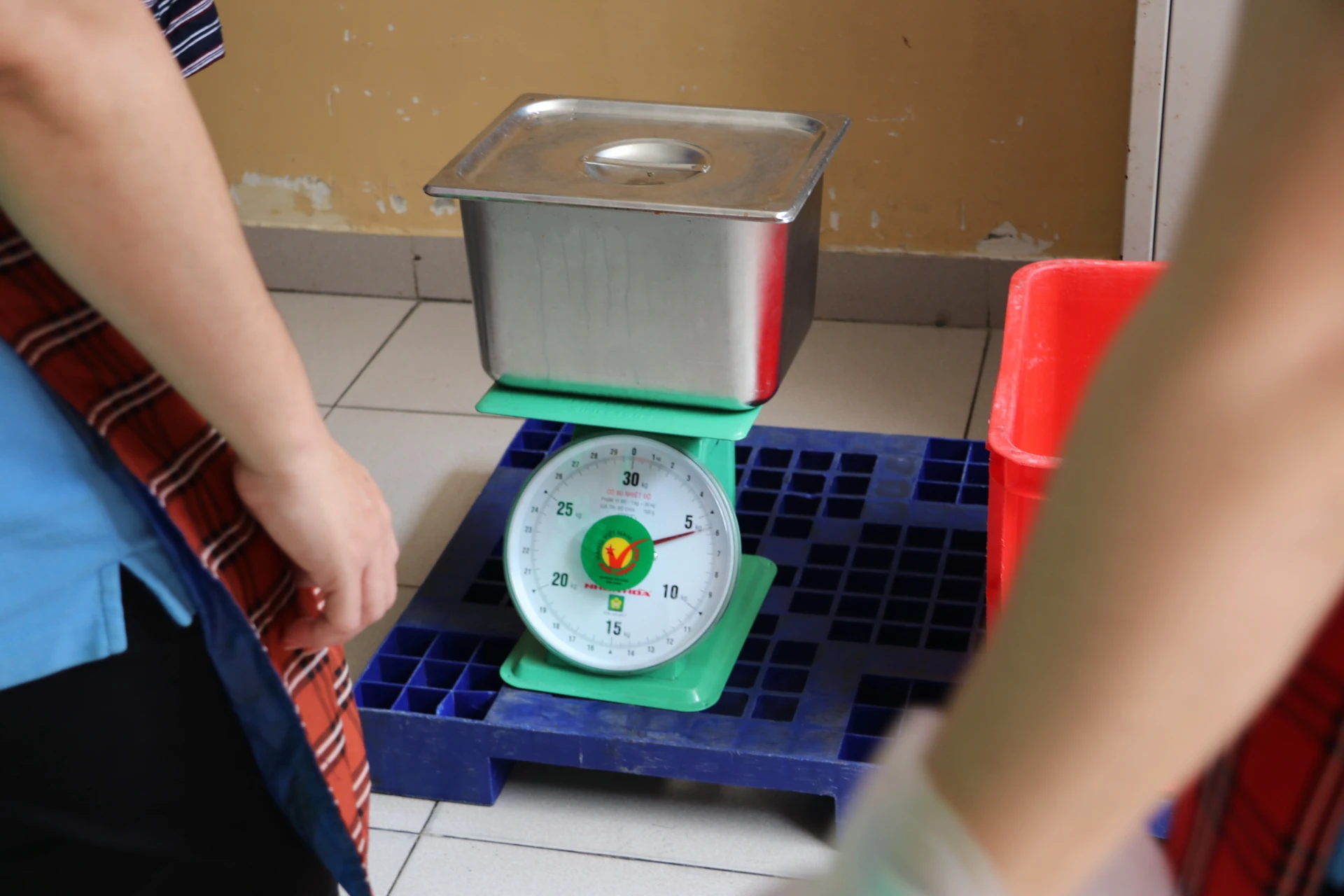
The nannies of each class will have a printed sheet of paper with the parameters of their class's lunch that day to weigh and compare with the lunch meal supplier.
Ms. Tran Thi Thu Huong, Principal of Dinh Tien Hoang Primary School, District 1, said that to ensure the meals are sufficient in quantity and quality, so that students can eat well, be full, and have enough nutrients, the school had to work closely with the meal supplier from the beginning. That unit must follow the quantification of each age group so that when food is brought into the school, the school will check the quality of the food and the quantity.
The school requires the meal provider not to pre-divide each tray for each child.
The catering provider must deliver to each class the right amount of rice, soup, and side dishes (weigh to know the right amount). Then, the classes will ask the students to line up so they can get their own rice and soup, and the nanny will divide the side dishes. This way, the students will eat enough, be full, and the food will be hotter.
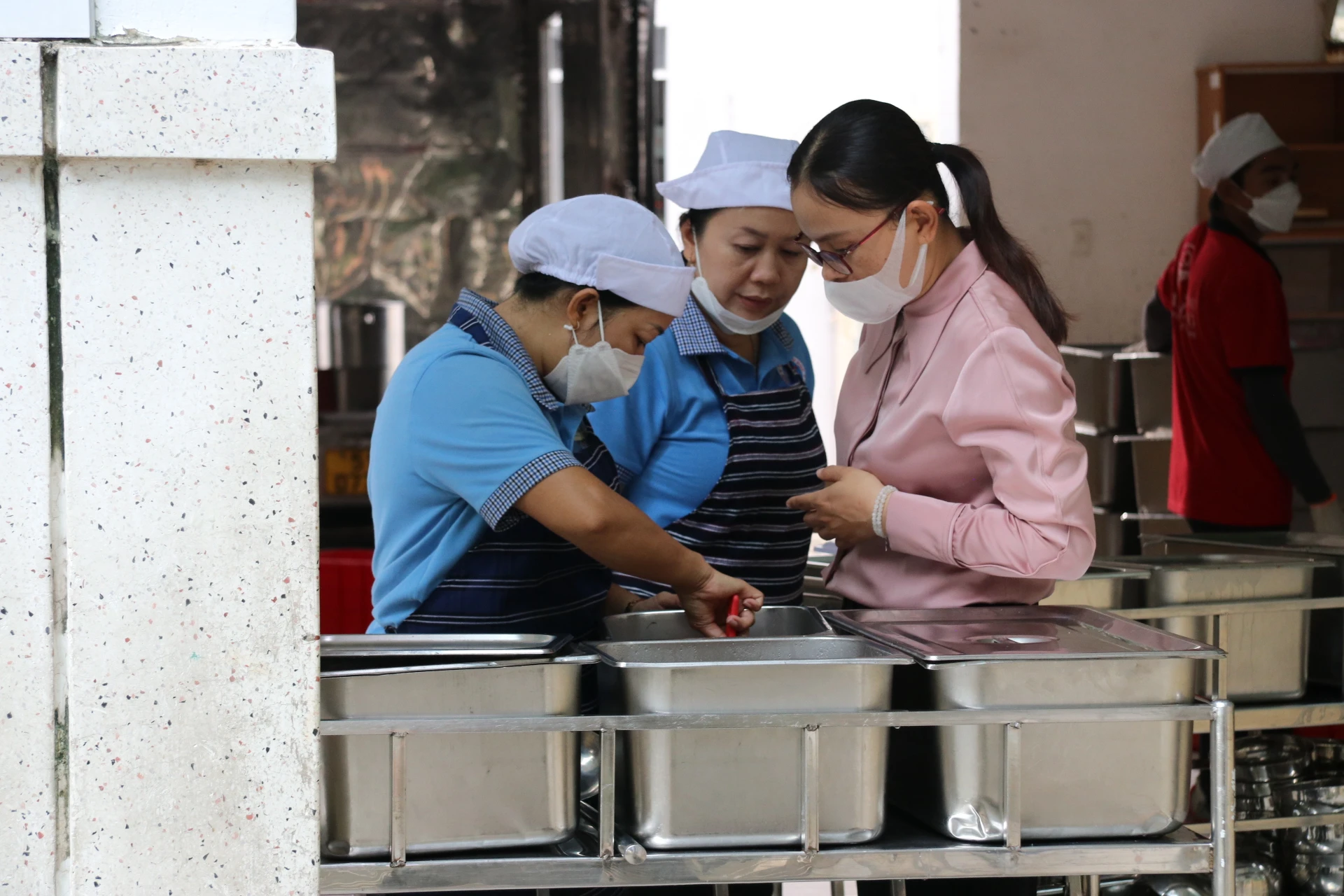
The school's boarding teacher always closely monitors the process of checking the delivered food in terms of quantity and quality.
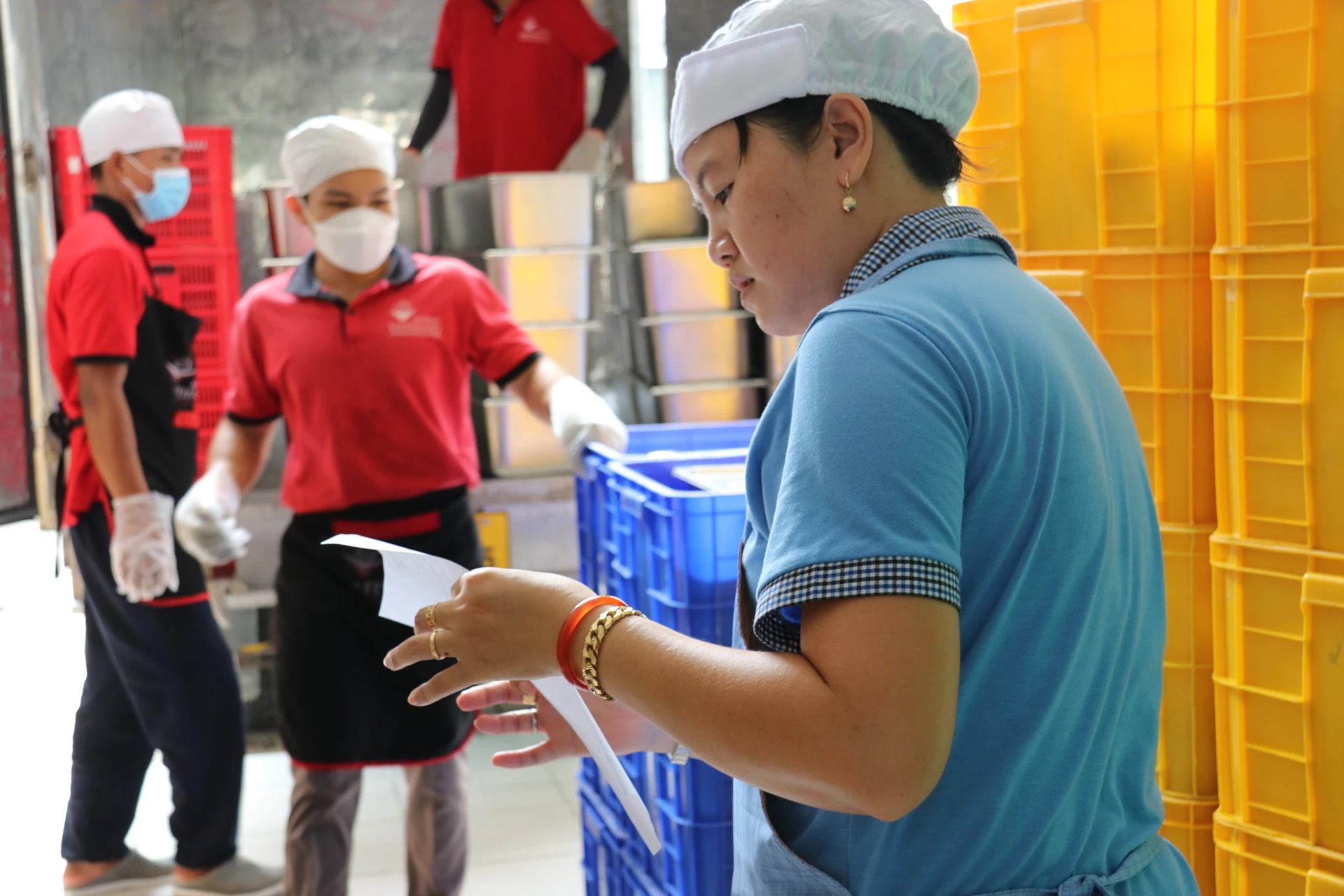
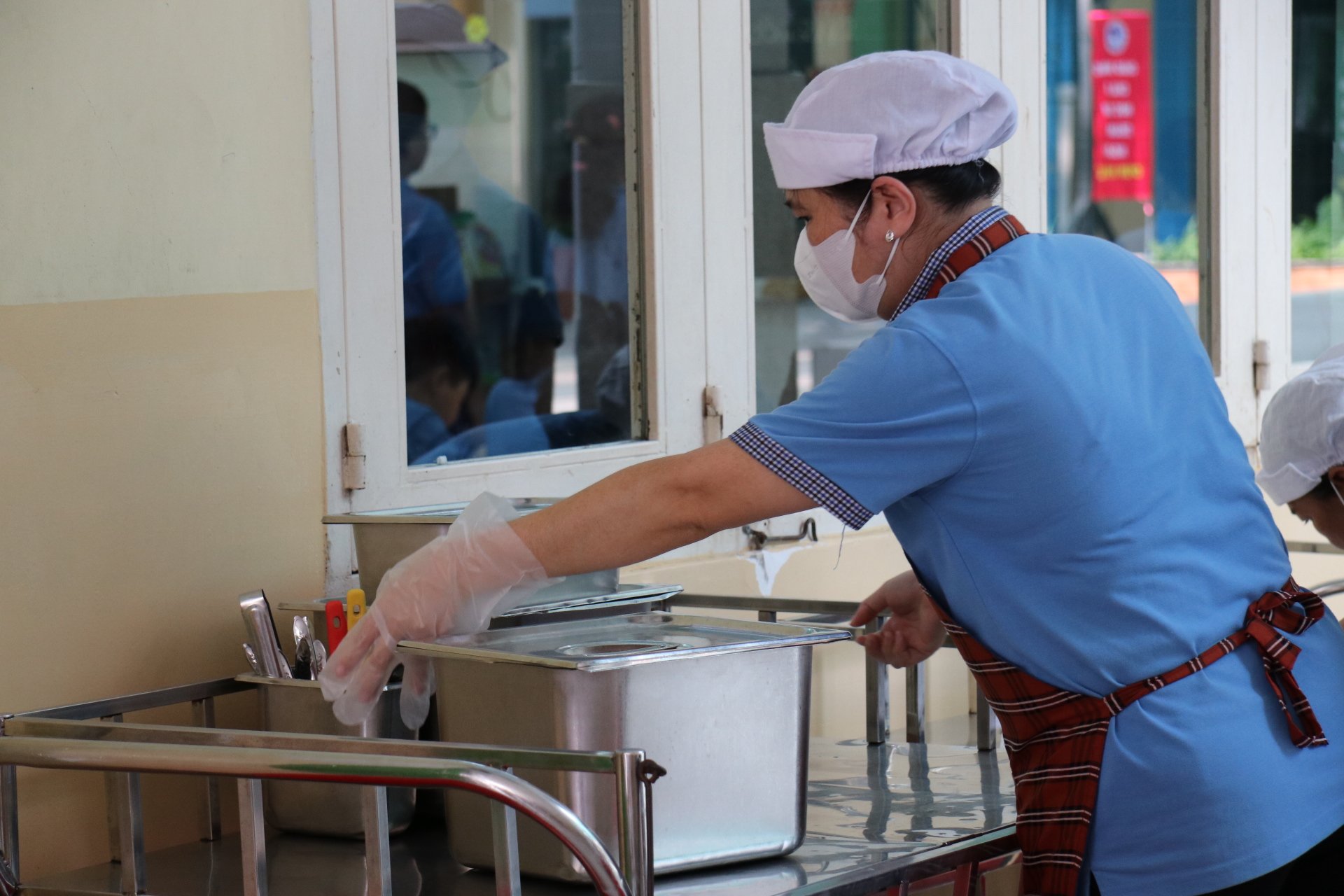
The nanny only receives boarding meals when the quantity and quality are correct and sufficient.
Thanks to the nutritional software that calculates and balances the amount of food for each class, corresponding to the age of the students, nutritional needs, and number of students eating lunch in the class, the lunch box will have different weights and quantities.
Each nanny will have a printed sheet of her class's lunch meal information ready to compare with the food supplier. Only when the quantity is sufficient will they receive the delivery. The food supplier is not allowed to work arbitrarily and deliver as much as they want.
For example, today's lunch is stir-fried vegetables, white rice, meatballs, soup, and bananas. Class 3/1 has 33 lunch portions. To be exact, it needs 5.6 kg of white rice; 8.3 kg of soup; 1.7 kg of savory dish (meatballs, weighed separately, not including water); 0.8 kg of stir-fried vegetables. The nanny checks the correct weight, comments on the color of the food, food hygiene, and equipment safety before signing the quantity sheet.
On days when the school serves soup dishes like pho, noodles, or hu tieu, the food truck must bring the broth to the school's nutrition education room to reheat, before dividing it among the classes to ensure the meal is always delicious.
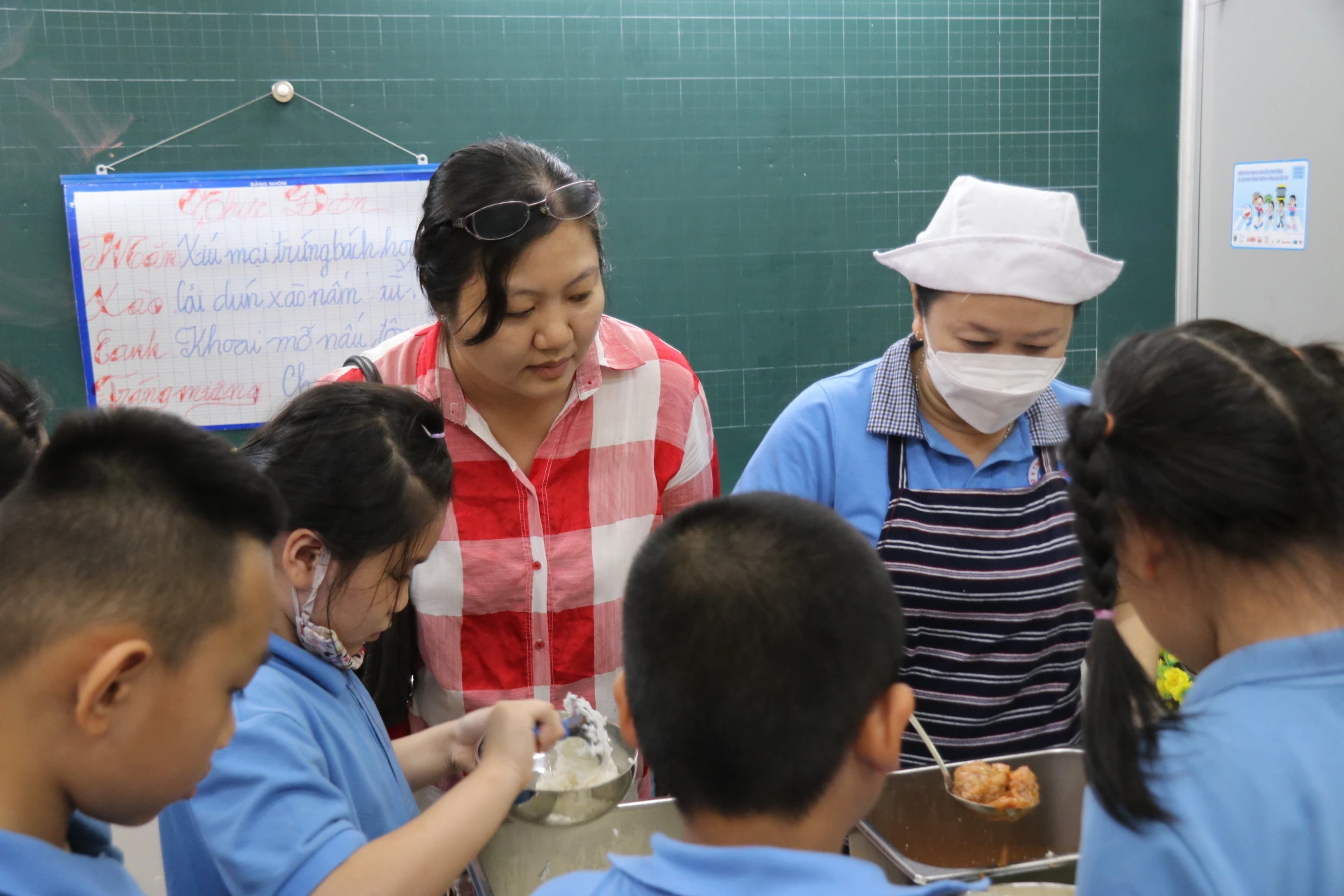
Lunch includes meatballs with hundred-flower egg, stir-fried Chinese cabbage, taro and shrimp, and banana for dessert.
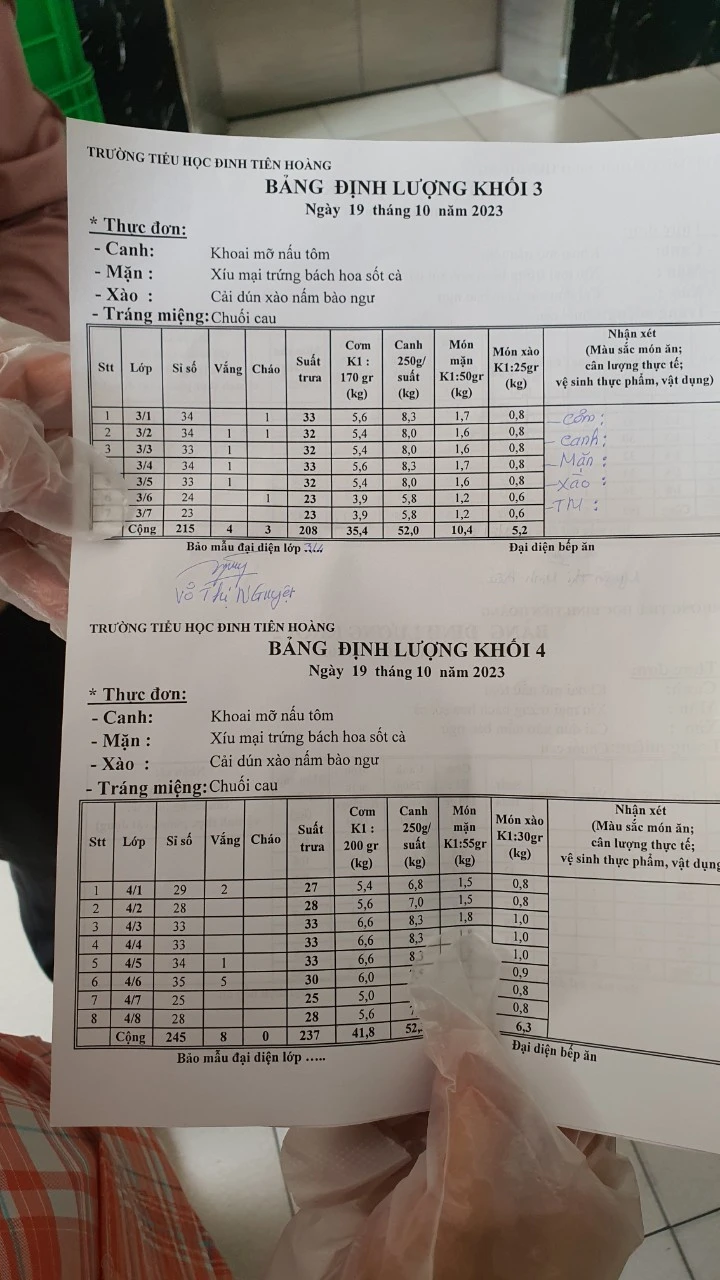
Corresponding to the dishes is a quantity table, the nanny of each class uses this as a basis to weigh the food and check if it is enough.
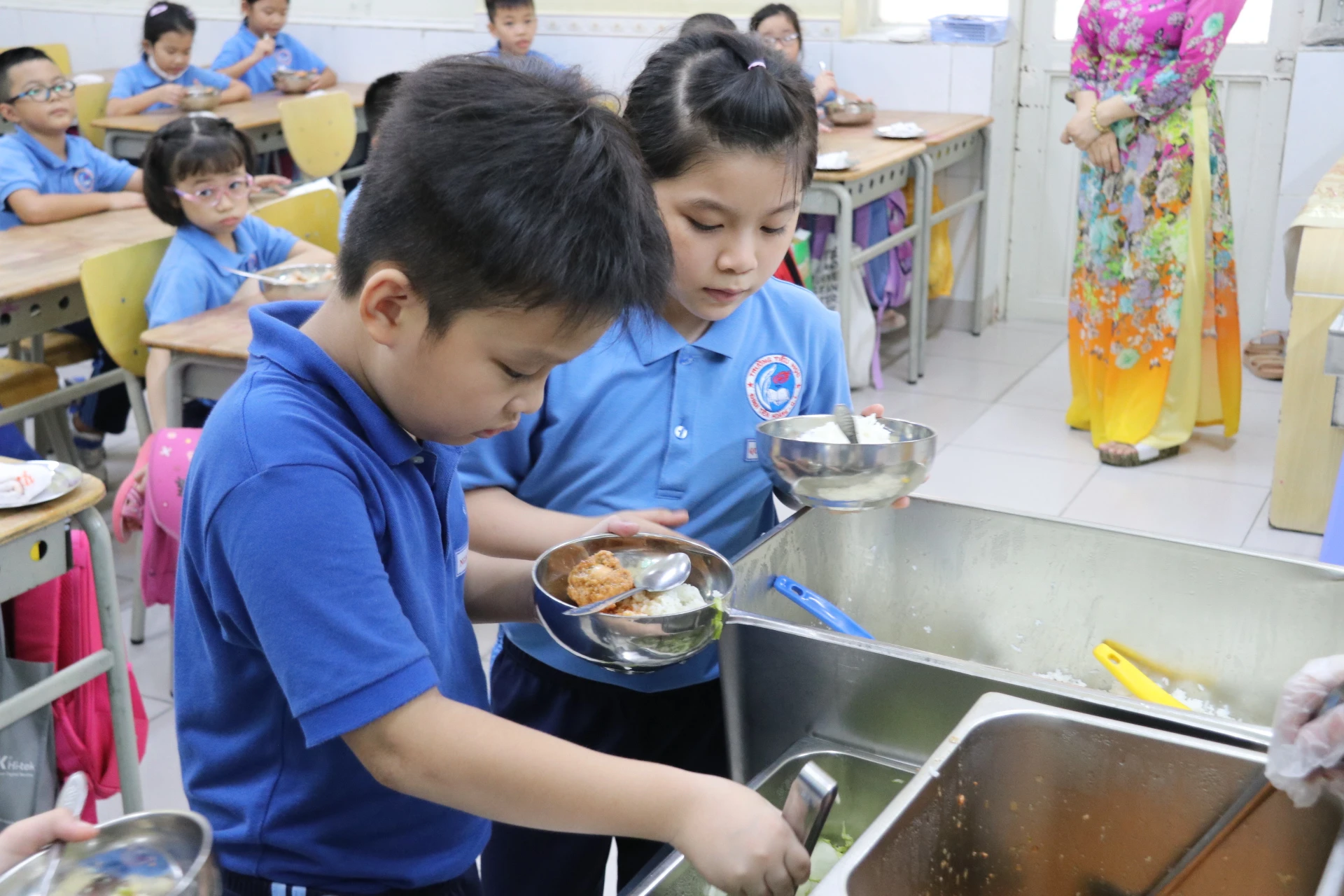
Students line up to get their own food, ensuring they eat enough and are full.
"I often go around the classrooms to see how the students ate today, whether they finished their meals, and what they think of the food. Here, most of the students eat very well and rarely leave leftover food. On days when there is leftover food, it's probably because the food provider gave them more," said Ms. Tran Thi Thu Huong, Principal of Dinh Tien Hoang Primary School, District 1.
At this school, there are two people who always eat lunch like the students. One is the medical staff, who must eat 30 minutes before the students to check if the meal is safe and hygienic, and what the color and smell are like. Then there is the principal, who eats after the students have finished eating to evaluate the quality of the meal and whether the quantity needs to be increased or decreased.
"The menu for boarding meals is always made public on the school website. Every year, in addition to the regular inspections by the school board and parent representatives of the meal suppliers, we also conduct surprise inspections of that supplier to see if they comply with food hygiene and safety conditions and the origin of the food," said Ms. Huong.
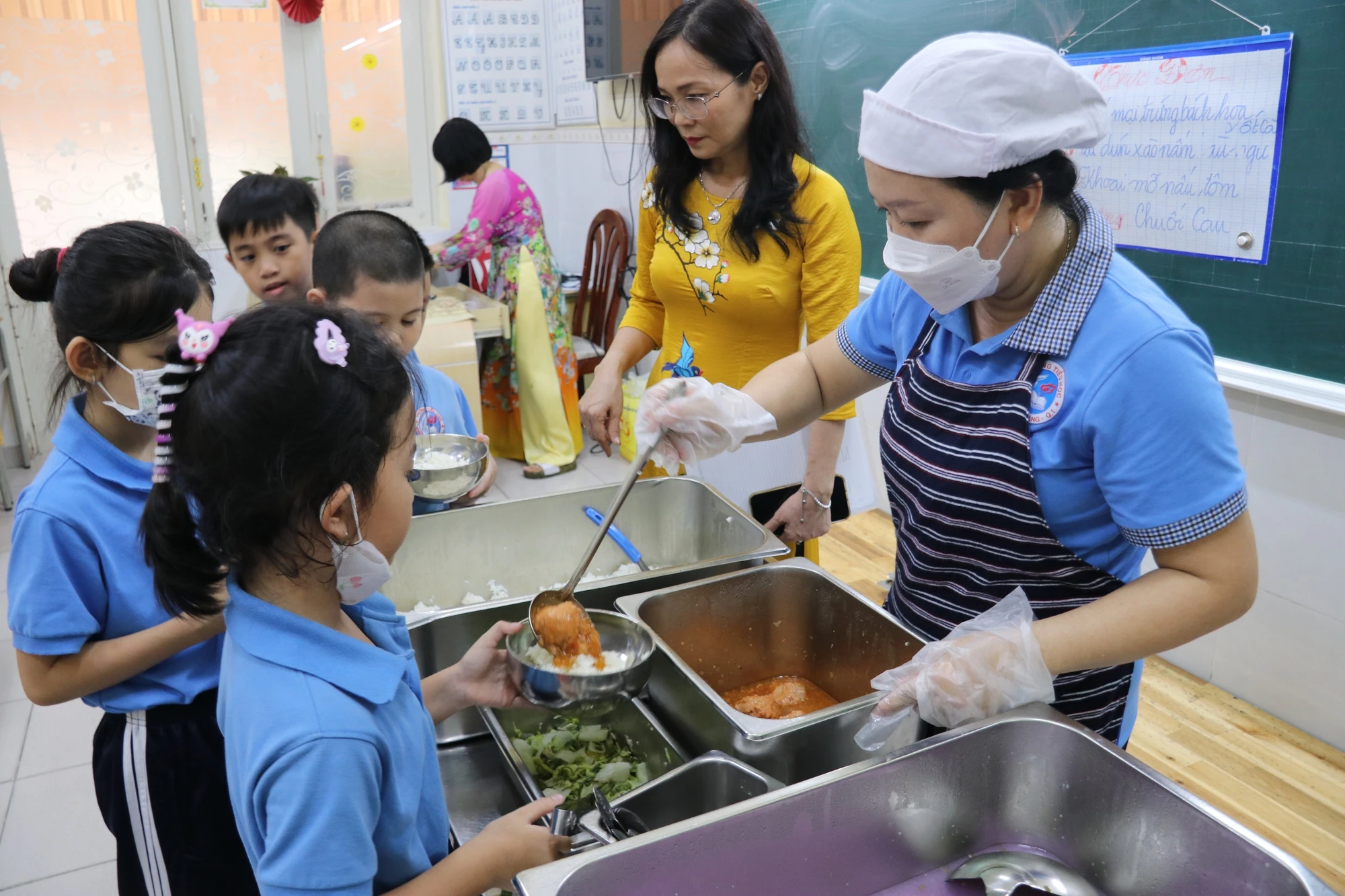
Ms. Huong (in yellow ao dai) visits the classes to see how the boarding students are eating.
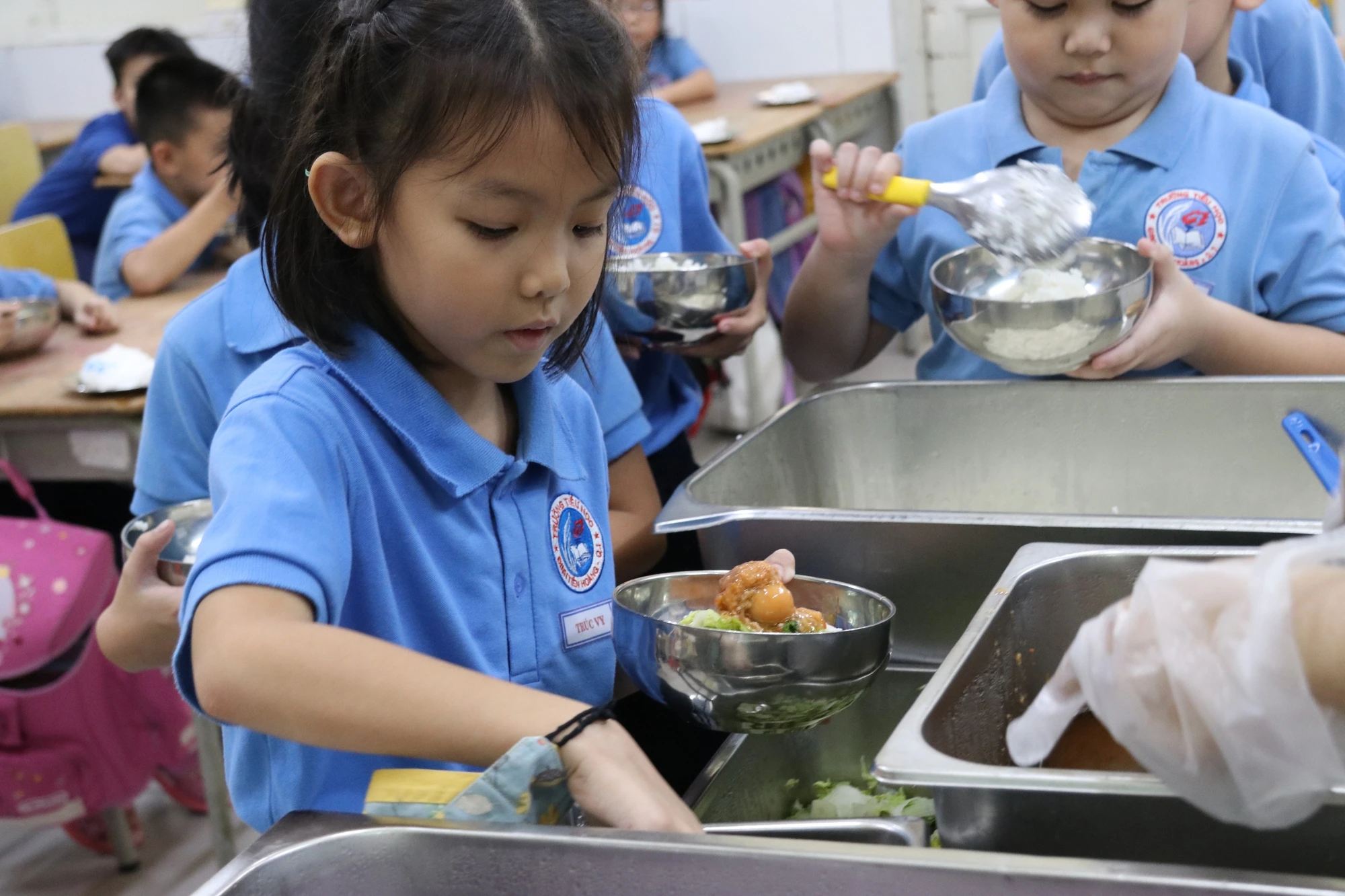
Thanks to the scientific method, students always get to eat enough quantity and quality of meals, and the meals are always hot.
Schools with kitchens also weigh the food delivered to each class.
Not only schools that order meals from outside catering providers need to weigh and verify food delivered to the school.
During a field trip to many school kitchens in Ho Chi Minh City, Thanh Nien Newspaper reporters noted that when the school kitchen finishes cooking the dishes, the rice and food will be distributed to the classrooms. The kitchen staff will also have a table calculating the amount of food for each class, corresponding to the number of students eating lunch in that class, to weigh the rice and food accurately.
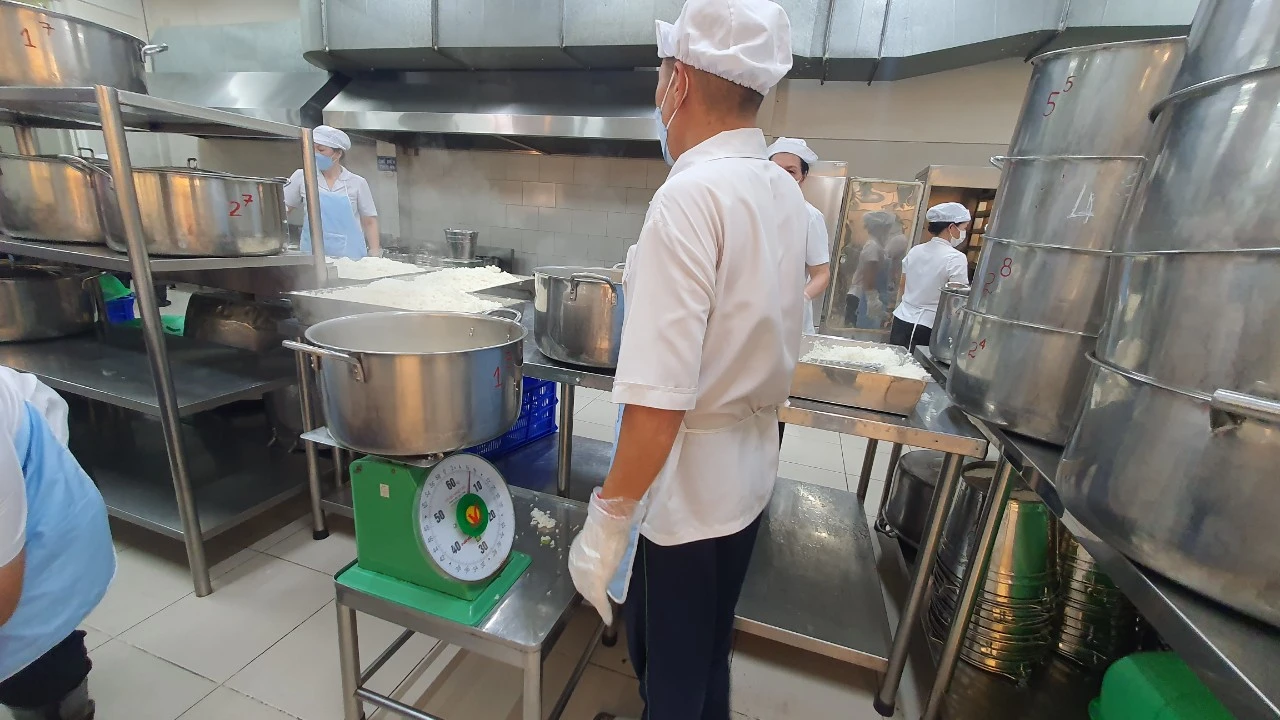
Food is also weighed and divided among classes after the chefs at Nguyen Binh Khiem Primary School, District 1, finish cooking.
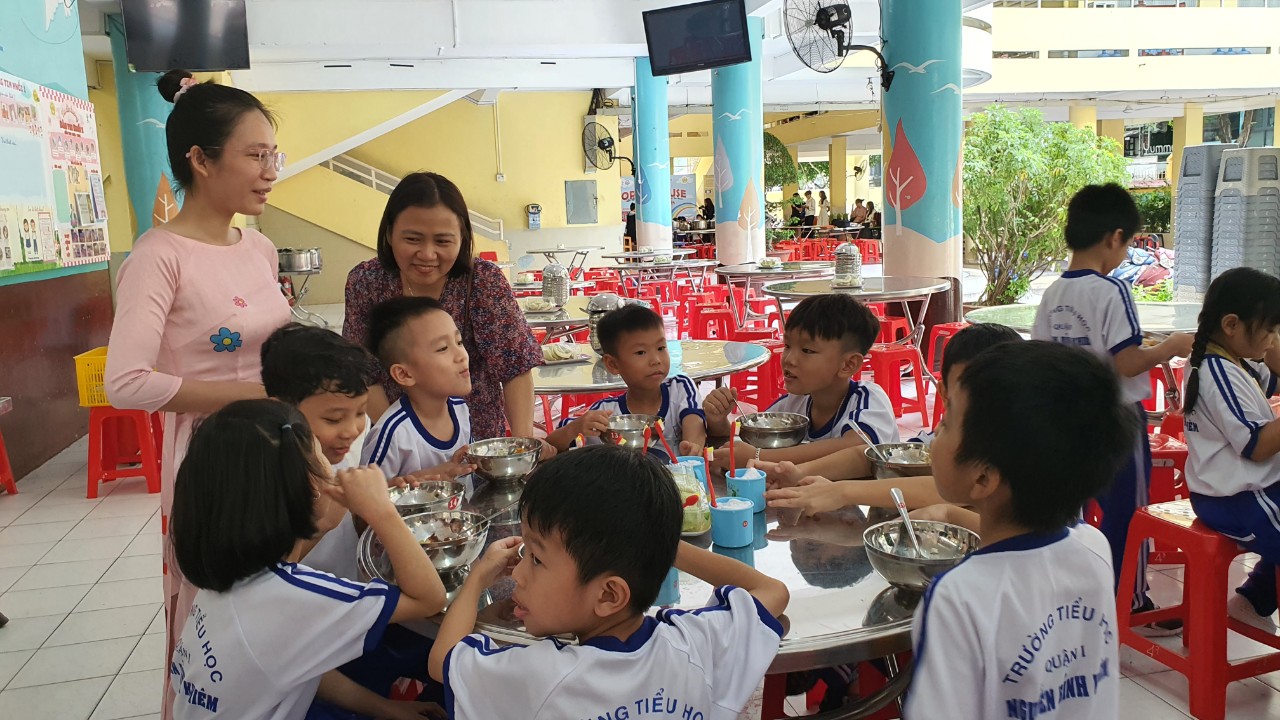
Students of Nguyen Binh Khiem Primary School, District 1 during lunch break
For example, at Nguyen Binh Khiem Primary School, District 1, Ho Chi Minh City, after the chef has weighed the rice, soup, and savory dishes to the right quantity for each class, the nannies will move the lunch to their class's dining table.
Principals of many primary schools in Ho Chi Minh City said that for many years, many schools in Ho Chi Minh City have implemented school meal projects, applying nutrition software in menu development, calculating portions, imported food quantity, calculating unit price of boarding meals... Thanks to that, organizing school meals is more convenient and scientific...
Source link





![[Photo] Hanoi morning of October 1: Prolonged flooding, people wade to work](https://vphoto.vietnam.vn/thumb/1200x675/vietnam/resource/IMAGE/2025/10/1/189be28938e3493fa26b2938efa2059e)


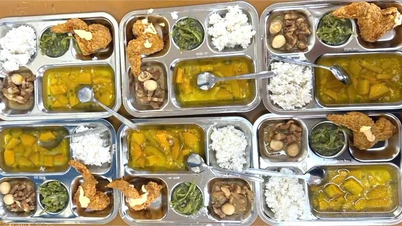

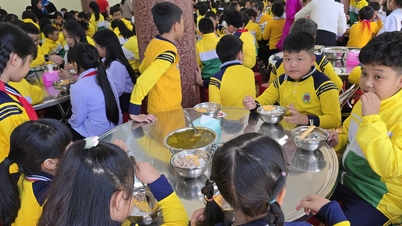
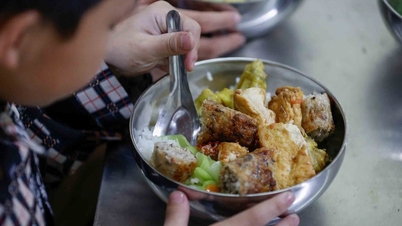



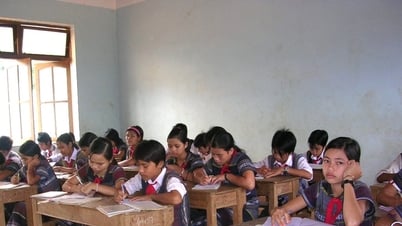


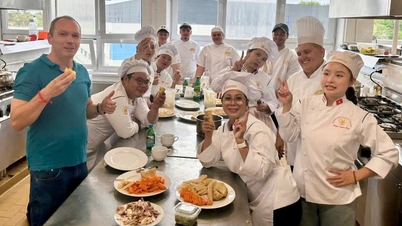




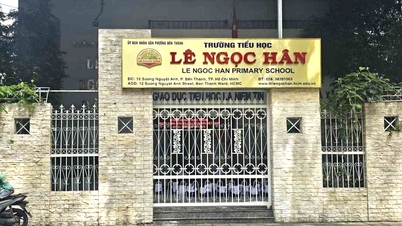








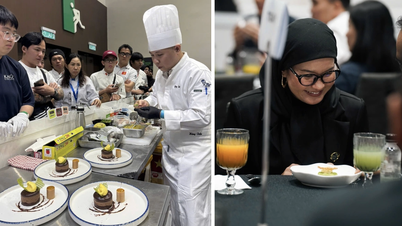


![[Photo] President Luong Cuong receives President of the Cuban National Assembly Esteban Lazo Hernandez](https://vphoto.vietnam.vn/thumb/1200x675/vietnam/resource/IMAGE/2025/9/30/4d38932911c24f6ea1936252bd5427fa)
![[Photo] The 1st Congress of Phu Tho Provincial Party Committee, term 2025-2030](https://vphoto.vietnam.vn/thumb/1200x675/vietnam/resource/IMAGE/2025/9/30/1507da06216649bba8a1ce6251816820)
![[Photo] Panorama of the cable-stayed bridge, the final bottleneck of the Ben Luc-Long Thanh expressway](https://vphoto.vietnam.vn/thumb/1200x675/vietnam/resource/IMAGE/2025/9/30/391fdf21025541d6b2f092e49a17243f)





































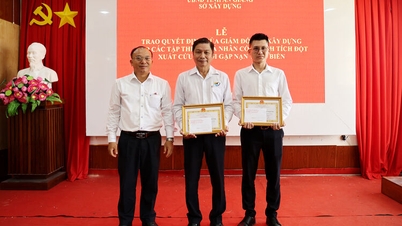



![[Megastory] A term of creation: An Giang rises from historical imprints](https://vphoto.vietnam.vn/thumb/402x226/vietnam/resource/IMAGE/2025/10/1/2660ab96e53f4270bcc37f8d39c36c78)
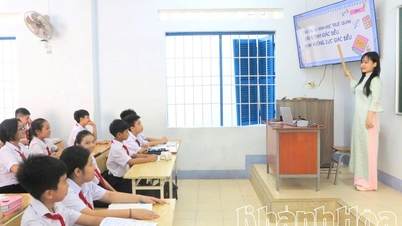

















Comment (0)